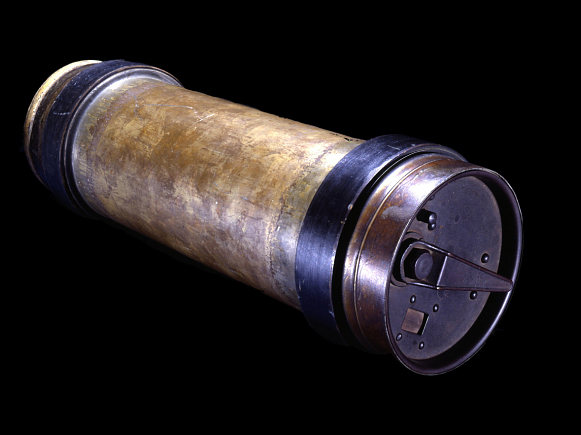
This canister was used to carry letters in New York City's underground pneumatic tube system. I should say semi-underground system. One very above ground portion of the tube ran between New York City and Brooklyn across that remarkable structure - the Brooklyn Bridge.
New York City began using pneumatic tubes in 1897. The original underground New York City tube system ran between the main post office building and station P, located in the Produce Exchange building. The Tubular Dispatch Company manufactured the pneumatic tubes and rented them to the Post Office Department for an annual fee of $148,500.
As late as 1914, 30 percent of first-class letters sent through the city's main post office were transmitted by pneumatic tube. By 1918 the Post Office Department began replacing its horse-drawn wagons with automobiles, which carried mail between railway stations and post offices even more rapidly than the pneumatic tube system.
During World War I, the Post Office Department suspended the service to conserve funding for the war effort. After the war, it restored the service, but while post offices and business centers moved with relative ease, the underground pneumatic system did not.
New York City continued using a portion of the pneumatic tube service into the 1950s, but by then it was basically obsolete. The Post Office Department suspended it in 1953, pending review, but never reinstated it. This canister was used in the late 1940s and early 1950s and could carry as many as six hundred letters and travel at about thirty-five miles per hour.
